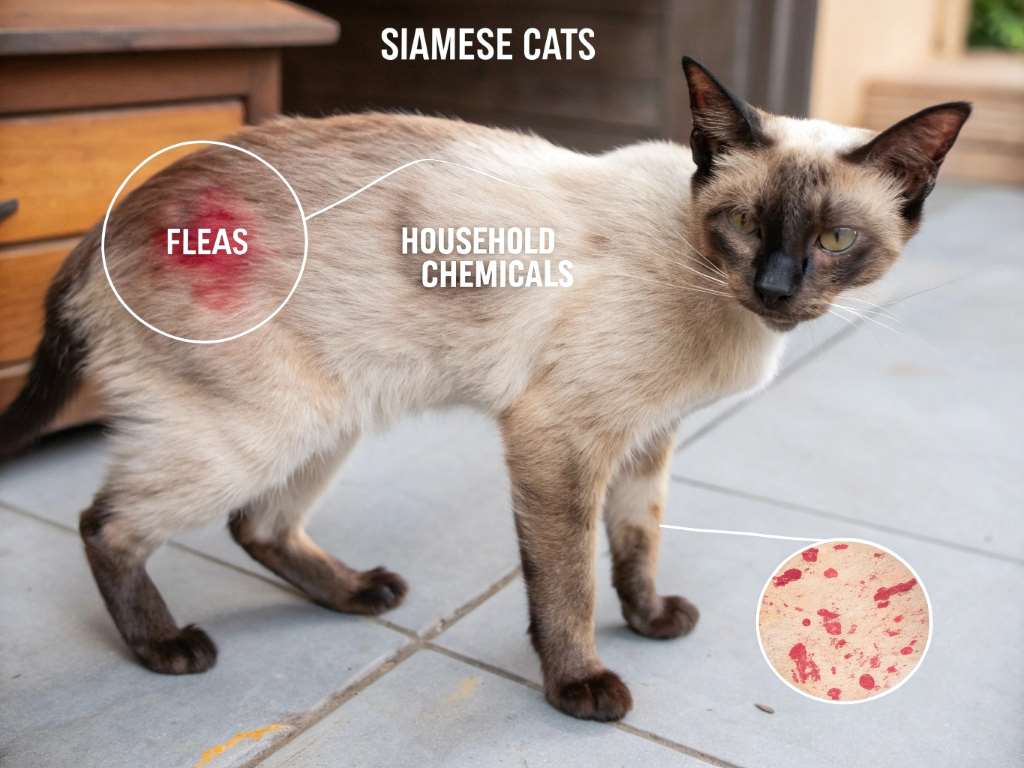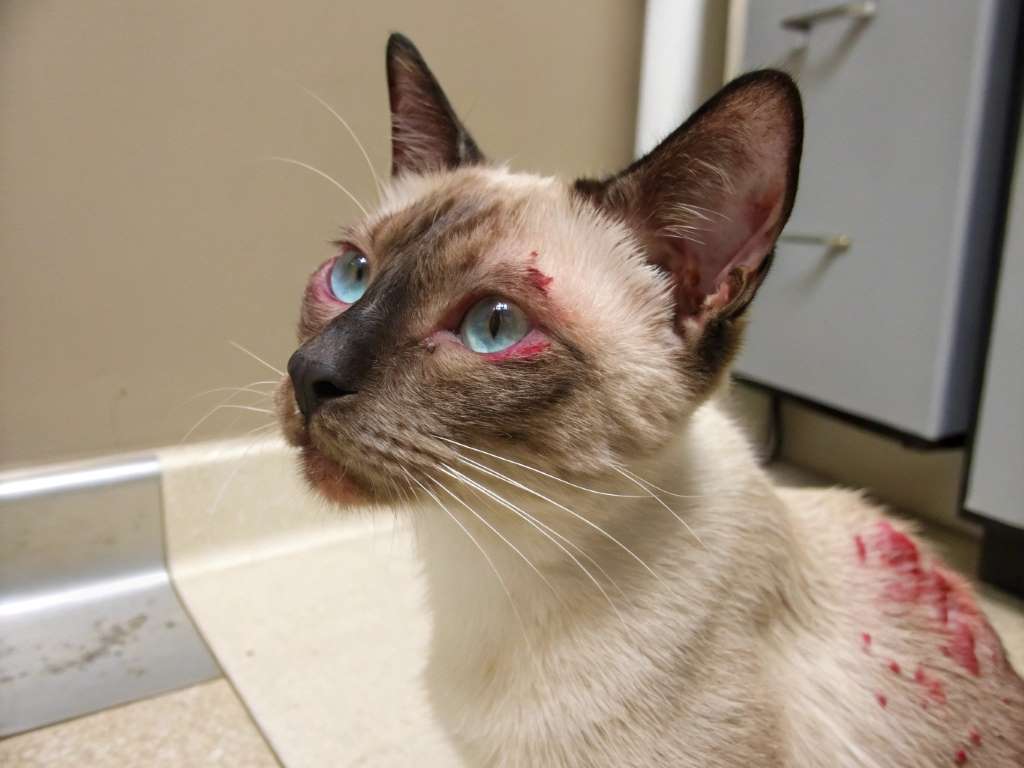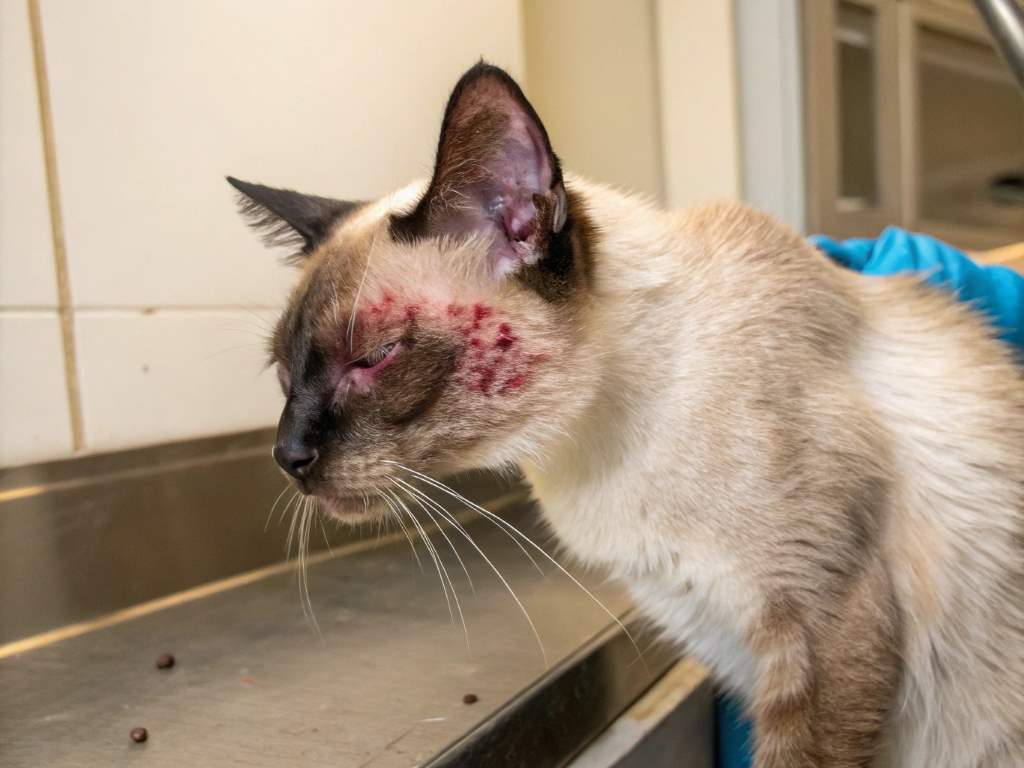
Siamese cats are known for their sleek coats and vibrant personalities. However, when your feline friend starts scratching excessively, it can be distressing. Skin irritation in Siamese cats is a common issue that leaves owners searching for answers. This blog post explores the potential causes, from allergies to parasites, and offers practical solutions to restore your cat’s comfort. As a cat owner myself, I’ve faced this challenge with my Siamese, Luna, who developed red patches from an unexpected food allergy. After consulting vets and researching, I learned how to manage her condition. This guide combines personal insights with expert advice to help you identify and address your cat’s skin woes. With clear explanations and actionable tips, you’ll feel confident in helping your pet. Let’s dive into the reasons behind your Siamese cat scratching discomfort and how to fix it.
Table of Contents
ToggleCommon Causes of Skin Irritation in Siamese Cats
Siamese cats are prone to skin irritation due to their sensitive skin and genetic predispositions. Several factors can trigger discomfort, ranging from environmental allergens to dietary issues. Understanding these causes is the first step to helping your cat. According to a 2023 study by the American Veterinary Medical Association, skin issues affect 15% of cats annually, with Siamese breeds at higher risk due to their delicate skin. Identifying the root cause requires careful observation and, often, professional guidance.
Allergies are a leading culprit. Siamese cats may react to pollen, dust, or certain foods, causing itching and redness. Parasites like fleas or mites also contribute significantly, as even one flea can trigger intense scratching. Infections, whether bacterial or fungal, can worsen existing irritation. Additionally, stress or grooming products may irritate their skin. My Siamese, Luna, scratched relentlessly until we pinpointed her chicken allergy. By addressing these triggers, you can alleviate your cat’s discomfort. Always consult a vet for a proper diagnosis to ensure effective treatment.
Allergies: A Major Trigger for Skin Issues
Allergies are among the most common causes of skin irritation in Siamese cats. These reactions can stem from environmental factors, food, or contact with irritants. Environmental allergies, often caused by pollen, mold, or dust mites, lead to itching and red skin. Food allergies, like Luna’s reaction to chicken, can manifest as rashes or hot spots. Contact allergies occur when cats touch irritants like certain fabrics or cleaning products. A 2022 study by Cornell University’s College of Veterinary Medicine found that 20% of feline skin issues are allergy-related, with Siamese cats particularly susceptible.
Symptoms include excessive scratching, hair loss, and inflamed skin. To identify the allergen, vets may recommend elimination diets or allergy testing. For environmental allergies, regular cleaning and air purifiers can reduce exposure. Food allergies require switching to hypoallergenic diets. In Luna’s case, transitioning to a fish-based diet resolved her symptoms within weeks. Antihistamines or steroids may be prescribed for severe cases, but always follow your vet’s advice. Monitoring your cat’s environment and diet is key to managing allergies effectively.
Parasites: Fleas, Mites, and More
Parasites are a frequent cause of skin irritation in Siamese cats. Fleas are the most common, and even a single bite can cause intense itching, especially in sensitive breeds. Mites, such as those causing mange, burrow into the skin, leading to scabbing and hair loss. Ticks, though less common, can also irritate the skin. According to the Companion Animal Parasite Council, 1 in 5 cats in the U.S. encounters fleas annually, with indoor cats at risk if exposed to other pets.
Flea allergy dermatitis is particularly problematic for Siamese cats, causing red, crusty patches. Check for flea dirt (small black specks) in your cat’s fur to confirm. Mite infestations may require microscopic examination by a vet. Treatment involves topical or oral medications, like flea preventatives or anti-mite solutions. Regular grooming and vacuuming your home reduce parasite risks. When Luna had fleas, a vet-recommended topical treatment cleared them quickly. Preventative measures, such as monthly flea control, are essential to keep parasites at bay and your cat comfortable.
Infections: Bacterial and Fungal Culprits
Bacterial and fungal infections can cause significant skin irritation in Siamese cats. Bacterial infections often arise from untreated wounds or allergies, leading to red, oozing sores. Fungal infections, like ringworm, present as circular, scaly patches. A 2024 report by the Veterinary Dermatology Journal noted that 10% of feline skin cases involve infections, with Siamese cats prone due to their thin coats. These conditions require prompt treatment to prevent spreading.
Symptoms include redness, swelling, and hair loss. Bacterial infections may produce a foul odor, while ringworm often glows under a vet’s UV light. Diagnosis typically involves skin scrapings or cultures. Treatment includes antibiotics for bacterial issues or antifungal medications for ringworm. Keeping your cat’s skin clean and dry aids recovery. When Luna developed a bacterial infection from scratching, a course of antibiotics cleared it up. However, infections can recur if underlying issues, like allergies, aren’t addressed. Regular vet checkups and good hygiene practices help prevent these problems and keep your cat’s skin healthy.
Stress and Behavioral Factors
Stress can significantly impact a Siamese cat’s skin health. These cats are highly sensitive, and anxiety can lead to overgrooming, causing irritation or hair loss. Common stressors include changes in routine, new pets, or loud environments. A 2023 study by the Journal of Feline Medicine and Surgery found that 12% of Siamese cats exhibit stress-related skin issues. Overgrooming often creates bald patches or raw skin, worsening the problem.
Identifying stress triggers is crucial. Observe your cat’s behavior for signs like hiding or aggression. Providing a calm environment with hiding spots and interactive toys can reduce anxiety. Pheromone diffusers, like Feliway, may also help. In my experience, Luna’s scratching worsened after a move, but a consistent routine calmed her. Severe cases may require anti-anxiety medication prescribed by a vet. Additionally, ensure your cat’s diet supports skin health, as stress can exacerbate nutritional deficiencies. By addressing stress, you can prevent behavioral skin issues and improve your cat’s well-being.
Diet and Nutritional Deficiencies
A poor diet can contribute to skin irritation in Siamese cats. Nutritional deficiencies, particularly in essential fatty acids or vitamins, weaken the skin barrier, leading to dryness and itching. Low-quality foods may also contain allergens that trigger reactions. According to a 2023 study by the Journal of Veterinary Internal Medicine, 8% of feline skin issues link to dietary imbalances. Siamese cats, with their sensitive systems, are especially vulnerable.
Symptoms include flaky skin, dull coats, and persistent scratching. Omega-3 and omega-6 fatty acids, found in fish oil, support skin health. Diets lacking these nutrients can worsen irritation. Switching to high-quality, vet-recommended food can make a difference. When I changed Luna’s diet to a hypoallergenic formula, her coat became shinier, and her itching decreased. Consult your vet to identify deficiencies through blood tests. Supplements may be recommended, but avoid over-supplementation, as it can cause other issues. A balanced diet tailored to your cat’s needs is essential for maintaining healthy skin and preventing irritation.
Grooming Products and Environmental Irritants
Grooming products and environmental irritants can trigger skin irritation in Siamese cats. Harsh shampoos, scented sprays, or household cleaners may cause contact dermatitis. Even laundry detergents used on pet bedding can irritate sensitive skin. A 2022 study by the American College of Veterinary Dermatology reported that 5% of feline skin cases stem from contact irritants, with Siamese cats at higher risk due to their thin coats.
Symptoms include redness, itching, and rashes, often localized to areas exposed to the irritant. To prevent this, use hypoallergenic, vet-approved grooming products. Rinse thoroughly after baths to remove residue. Wash your cat’s bedding with fragrance-free detergents. When Luna reacted to a new shampoo, switching to a gentle, oatmeal-based formula resolved her irritation. Additionally, keep your home free of strong chemicals, like bleach, near your cat’s spaces. Test new products on a small area of skin first. By minimizing exposure to irritants, you can protect your Siamese cat’s delicate skin and reduce irritation risks.
When to See a Veterinarian
Knowing when to seek veterinary care is critical for addressing your Siamese cat’s skin irritation. Mild scratching may resolve with home care, but persistent or severe symptoms require professional attention. Signs like open sores, excessive hair loss, or behavioral changes warrant a vet visit. The American Veterinary Medical Association emphasizes that early intervention prevents complications in 90% of feline skin cases. Delaying treatment can worsen infections or underlying conditions.
Your vet may perform tests, such as skin scrapings, allergy panels, or blood work, to pinpoint the cause. They might prescribe medications like antibiotics, antifungals, or steroids. In Luna’s case, a vet’s diagnosis of fleas and allergies led to targeted treatment that saved weeks of trial and error. Bring notes on your cat’s symptoms, diet, and environment to aid diagnosis. Regular checkups can catch issues early. If home remedies fail after a week, don’t hesitate to consult a professional. Prompt veterinary care ensures your cat’s comfort and prevents long-term skin problems.
Tips to Soothe Your Cat’s Skin
Helping your Siamese cat with skin irritation involves practical steps you can start today. These tips complement veterinary care and promote long-term skin health. Always consult your vet before making significant changes.
- Use hypoallergenic products: Choose vet-approved shampoos and bedding detergents to avoid irritants.
- Maintain a clean environment: Vacuum regularly to reduce dust, pollen, and fleas in your home.
- Switch to a high-quality diet: Opt for foods rich in omega-3 fatty acids to support skin health.
- Apply flea prevention: Use monthly treatments to protect against parasites, even for indoor cats.
- Reduce stress: Provide toys, hiding spots, and a consistent routine to keep your cat calm.
- Monitor symptoms: Keep a journal of your cat’s scratching to identify patterns or triggers.
When I implemented these steps for Luna, her skin improved significantly within a month. Consistency is key, and small changes can yield big results. Combine these tips with professional advice to ensure your cat’s comfort and happiness. Explore How are pets good for health.
Conclusion
Skin irritation in Siamese cats can stem from allergies, parasites, infections, stress, diet, or irritants. By identifying the cause and taking action, you can restore your cat’s comfort. My journey with Luna taught me the importance of patience and veterinary guidance. Regular grooming, a balanced diet, and a stress-free environment go a long way. Always monitor symptoms and seek professional help when needed. Your Siamese deserves a healthy, itch-free life, and with the right care, you can make it happen. Share your experiences or questions in the comments below, or spread this guide to help other cat owners. Together, we can keep our feline friends happy and healthy.
Have you dealt with your Siamese cat’s skin irritation? Share your tips in the comments or share this article to help others!
FAQs
What are the most common signs of skin irritation in Siamese cats?
Excessive scratching, redness, hair loss, scabs, or rashes indicate skin irritation. Consult a vet for persistent symptoms.
Can food allergies cause skin irritation in Siamese cats?
Yes, food allergies, like reactions to chicken or grains, can cause itching and rashes. An elimination diet helps identify triggers.
How can I tell if fleas are causing my cat’s skin irritation?
Look for flea dirt (black specks) in fur or red, crusty patches. A vet can confirm and recommend treatments.
Are Siamese cats more prone to skin issues than other breeds?
Siamese cats have sensitive skin and thin coats, making them more susceptible to allergies, parasites, and irritants.
What home remedies can soothe my cat’s skin irritation?
Use hypoallergenic shampoos, maintain a clean environment, and ensure a balanced diet. Always consult a vet first.



